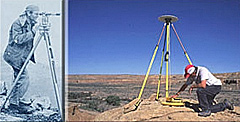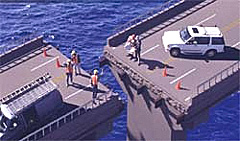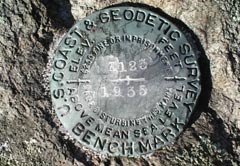
|
|
National Geodetic Survey
Geodesy is the science of determining the size and shape of the Earth and the location of points upon its surface. The National Geodetic Survey (NGS) develops and maintains a national system of positioning data needed for transportation, navigation, and communication systems; land record systems; mapping and charting efforts; and defense operations. The centerpiece of this system is the National Spatial Reference System (NSRS). This is a national coordinate system that defines position (latitude, longitude and elevation), distances and directions between points, strength of gravitational pull, and how these change over time. NSRS includes:
NGS also implements a coastal mapping program, which measures precise positions of the shoreline and other features needed for creating accurate nautical charts. It conducts aerial photography surveys near airports in the United States and its territories to locate obstructions and aids to air travel. NGS also develops industry specifications and standards for conducting geodetic surveys, coordinates the development and application of new surveying instrumentation and procedures, and assists state, county, and municipal agencies through a variety of cooperative programs and training workshops.
In 1970, the National Oceanic and Atmospheric Administration (NOAA) was created and NOS was established as a line office of NOAA. To acknowledge the geodetic portion of NOAA’s mission, the part of NOS responsible for geodetic functions was named the National Geodetic Survey. (top) |
|
|||||||||||||||||||||||||
|
|||||||||||||||||||||||||||
|
Revised February 27, 2004 | Questions, Comments? Contact Us | Report Error On This Page | Disclaimer | User Survey |


